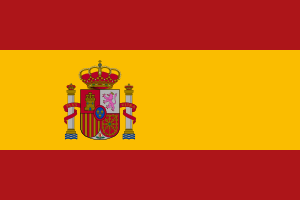SPAIN DANCE AND MUSIC
FLAMENCO
Flamenco
is a form of popular artistic expression representing a long-standing
tradition that appears on the UNESCO’s list of Intangible Cultural
Heritage of Humanity.
This
art form combines vocal music, dance and musica accompaniment (called
cante, baile and toque) rooted fundamentally in Andalusia and other
regions like Murcia and Extremadura. This cultural expressive vehicle
with two centuries of history (some experts have traced its origins
in the 18th century, when its popularity began to grow) is the most
emblematic of Andalusian folklore and the most renowned form of
artistic expression in Spain. Flamenco has become a true identity for
numerous communities, such as the gypsy ethnic group, where it is
transmitted from generation to generation through dynasties of
artists, families, flamenco clubs, numerous important festivals and
schools and tablaos, whose numbers are growing each year.
There
are a myriad of figures in the world of flamenco whose endeavours in
the art have brought them great success, namely, Antonio Gades,
Enrique Morente, Eva La Yerbabuena, La Niña de la Puebla, Joaquín
Cortés, Antonio Canales, Rafael Amargo, Antonio “El Bailarín”,
Camarón de la Isla, Cristina Hoyos or Carmen Amaya, just to name a
few.
Both song and dance (cante and baile) can be express a
multitude of varied sentiments. Cante can not only be accompanied by
the guitar, but also by castanets, a percussion box known as “el
cajón”, hand-clapping and heel-clicking, whose rhythms are broken
down into diverse “palos” or varieties (toná, soleá, seguiriya,
fandango, sevillanas, etc.) based on factors such as the song’s
character or origin. The dancer, in turn, possesses a complex
technique and the interpretation of the baile varies according to the
individual interpreter.
Jota
The
jack is a Spanish dance that , at present, is danced in most
communities of the geography of Spain , among which has varied
according to the customs of each region. The most popular are the
Aragonese jacks and Castilian jack, Leon , Valencia , that of La
Rioja and Navarre . In Cantabria , is known by the name of mountain .
Jacks are a dance accompanying voice and where bailares carry
castanets in each hand , and a typical regional costume. Besides
castanets , dance is accompanied by guitars , lutes , mandolins ,
accordions and drums . In communities of northern Spain , the typical
instruments are incorporated ; thus , in the Cantabrian , Galician
and Asturian jot bagpipes, tambourines , drums, etc. are used The
origin of the jack goes back to the late eighteenth century, although
its heyday did not come until the nineteenth century.













